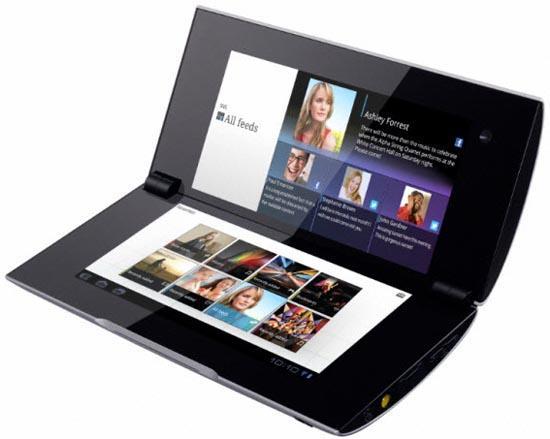
Within a matter of months, the tablet market has completely changed. No longer are manufacturers creating tablets that look like they all came from the same factory. Instead, a handful are putting their own little spin on things, hoping something will eventually stick.
When I say this, one particular company comes to mind: ASUS. And rightfully so. They have shown us two pretty useful concepts thus far and one far-fetched, Padfone concept that I'm not exactly sure of yet. In addition to ASUS, Sony is not far behind. Just last month, we were introduced to two truly bizarre tablets, the S1 and S2. Unlike ASUSTeK's vision for what a tablet should be, Sony has deprived their tablets of physical keyboards. Sony's pair of Honeycomb tablets come in two completely different and truly unique form factors, but is that enough to steal attention from ASUS or other, more prominent tablet manufacturers? Or will Sony's tablets come up short?
I hate calling a product DOA (dead on arrival), I really do. But Sony has completely blown my mind here ... and not in a good way.
Beginning with the less bizarre and ridiculous of the two, the S1 tablet comes with a larger sized display, measuring in at 9.4-inches. If the tablet is facing you, it looks no different from the other countless Android tablets. But when you angle the device ever so slightly, it begins to resemble a magazine with one half folded around behind the other. This is what Sony was aiming for with the wedge design. Since tablets are ideal for consuming media, Sony wanted the S1 to have a natural, magazine feel to it.
In all honesty, that isn't so bad. It even has some advantages like being naturally angles for easier typing on a tabletop. That said, it is unnecessarily bulky and it will be nearly impossible to find a good case for it. If those two drawbacks don't bother you, the S1 may not be too bad.

But what about the other tablet? What's the deal with the S2? What in the world was Sony thinking?
Sporting twin 5.5-inch (1024 by 480 pixel resolution) displays in a clamshell form factor, the S2 looks more like the mutated offspring of the Kyocera Echo and the original PS3. This alone makes us wonder whether the S2 should even be considered a tablet. But for the sake of time and for this article, we will go ahead and agree that it is, in fact, a tablet.
I have no problem accepting that multiple displays may eventually become the norm in the smartphone market. I will be the first to admit that dual-screen technology can be seriously advantageous and versatile: it makes multitasking a breeze and takes it to an entirely different level. The extra display space – without adding too much extra bulk – on a smartphone is certainly welcomed, if the manufacturer can find a half-decent way to implement it.
And for that matter, a dual-screen tablet isn't a half bad idea either. There have been several dual-screen tablets that have surface over the past two years or so, several of which have caught my eye. Unfortunately, none of them have actually materialized yet.
A dual-screen tablet with 7-inch or larger displays would make for the perfect college course companion: PDF text book on one display and a note pad app on the other. But I fail to see the benefit of a dual-screen tablet with 5.5-inch displays. I don't care to have my interface broken into two components, separated by a hinge. With much larger displays, however, this could prove to be much more useful. Instead of breaking up the UI and having a single home screen on two displays, you could have two separate home screens on each display, or several other configurations.
I just would have made more sense if Sony had made a dual-screen tablet with decent sized displays. They could have made it roughly the size of a book and marketed it to college students, competed with eReaders, other tablets and much more. Instead, they made it an awkward size and shape that has a questionable purpose.
Maybe I'm missing the point here. I'm all for choice and I'm glad Sony is aiming to break up the monotony a bit. But I would rather them bring some useful designs forward. This pair of tablets just made it through the FCC, so we don't know what to expect on pricing just yet. This factor alone will prove to be a make or break for Sony's tabs, just as it has for several tablets before them.
If Sony can manage to keep these below $500 (Wi-Fi models), they might just have a chance at finding a niche market. Otherwise, it will be back to the drawing boards for Sony. To be honest, I'd like to see them work off of these ideas. Both forms have some seriosu advantages. But I would hardly consider being an early adopter of either of these tabs with other, more useful designs about.